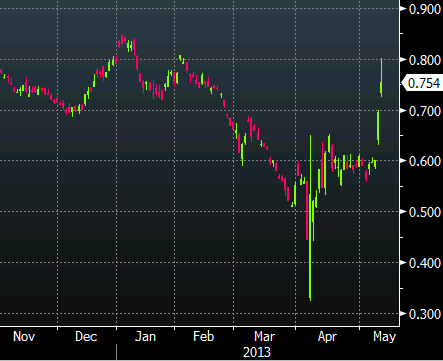Trading in Japanese bonds was halted for a period today after a second consecutive day of aggressive selling and yen traders are struggling to understand why.
Since Friday, yields on 10-year JGBs have rise to 0.75% from 0.60%. The current yield is the highest since February 6 despite the Bank of Japan promise to double quantitative easing.

Here are some explanations for the move:
- The market believes the BOJ will spur inflation
- The Nikkei rally has proven irresistible to institutional investors
- JGB investors are switching to Treasuries, or European bonds
- The falling yen is scaring away reserve managers
- Better economic growth is spurring a move to risk assets
In addition, the WSJ talks about potential problems with the BOJ buying more than 70% of new issues.
That means less supply for market participants, a situation that is exacerbated when investors get skittish and decide to sit on the sidelines. When someone does move, the shift is amplified.
What would really cause USD/JPY is an indication that the market is losing confidence in Japan to repay its debts but there are no signs of that.
At the moment, rising Japanese yields are a USD/JPY negative and should make longs cautious of a pullback.



